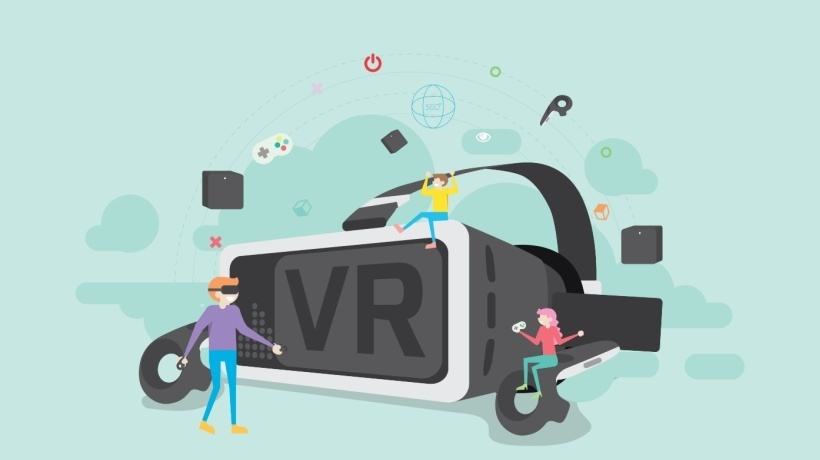7 Tips For Onboarding Employees
Our most basic human needs are food, shelter, and value. The latter takes many forms. It could be affection from your friends or appreciation by your boss. Or it could be an opportunity to acquire skills that help you earn a living. When you design an onboarding employee training course, you’re hitting all three touchpoints. But only if you build suitable courses for your team. What elements are crucial, especially for new hires? And how can an employee training LMS help you prepare them for what lies ahead?
1. Real-World Activities To Build Experience
Many college degrees – even technical ones – focus on theory. It’s why people spend four or five years in university and still feel under-prepared in the workplace. This happens often, even if they end up in the field they studied for. They have the right papers, but their knowledge doesn’t help them in real-world situations. Boost them with practical training, focusing on things they’ll actually use at work. Walk them through mundane, contextual office tasks. Like pricing a product. Or upselling tactics. Your new hires need to know how to deal with everyday challenges instead of exploring irrelevant theories.
2. Dwell On The Human Factor
For example, an IT hire may know the history of code and the life stories of all the Steves and Bills. But what you really need is for them to help digitally illiterate customers. You need them to "dumb down" tech-speak for Luddites. Don’t have them read another Bezos biography in their quest to be the next silicon billionaire. Train them in empathetic listening, human connection, and layman’s communication. If they master these from their first days at work, it will boost their careers and your overall organizational results. The human factor also extends to your content development. Include personal anecdotes and examples in your onboarding employee training program so that they can learn favorable performance behaviors.
3. JIT Support Tools
We’ve all been in that situation where a quick Google search saved our lives, or at least win an argument with a friend. It could be a last-minute restaurant review or directions to your next client. Offer the workplace equivalent of this "call a (n online) friend" capacity. Just-in-time training resources are designed to be micro – both in size and content. You may have taken a course in foreign driving (i.e. the left / right side of the road). But what if you’re stuck at a red light roundabout or intersection? Your new hire may want to glance at their screen and verify which lane they should be on.
4. Effective Portability
In the example above – especially with corporate driving lessons – you can link LMS to GPS. This is easier if you’re using the type of LMS that facilitates asset management (e.g. assigning and tracking office cars). In other examples, trainees may want to study on their own time. This applies whether they work in the field, or whether they routinely leave work early to pick their kids. Ensure your training course has a component that lets them study wherever they want. This could be a native smartphone app or a course optimized for solar-powered tablets. Mobile access is especially crucial for younger workers who literally grew up on their phones.
5. Convenient Playback Features
Along the same lines, remember the risk of small screens. They’re convenient, but in certain set-ups, they’re harder to use. For example, most of us watch clips on our phones, but YouTube trumps Vimeo or embeds. How? It’s easier to pause, replay, and identify content. Ensure your video and audio training clips are easy to navigate, and they can be repeated (or muted) at will. You can also add closed captions and text-to-speech features to your audio-visual content. Include lots of (seemingly) mundane how-to tutorials in your employee training LMS for new staff. They need it.
6. Crowd-Sourcing Options
In school classrooms, teachers invite participation because it helps retention levels. It also keeps bored students awake on sleepy mornings and lazy afternoons. The adult equivalent is to provide opportunities for new trainees to get involved. They may not appreciate being called out by name, but you can prep them. Pre-assign topics and have them generate content. They could make a video on their phones, record an audio clip, or assemble a PowerPoint infographic. It’s a good way to draw out fresh employees who may be too intimidated to speak up at their new job.
7. Communication Platforms
You could also have group messaging sessions where you ask direct, relevant questions to passive members. Pick said questions carefully. You want to involve them, not embarrass them. So, consider their skill set and ask them something you’re sure they can competently answer. Or at least something they care about enough to look into it. Self-assessment tests are a good way to identify these individual areas of interest, so as an instructor or moderator, review staff analytics. It’ll make you better at your job, because you connect well, and offer more value.
Enhance Your Employee Onboarding Training
Starting a new job is all kinds of stressful, but fresh recruits keep the company young, vibrant, and relevant. How can you ease their transition into your workspace? Train them on contextual, real-world activities. Emphasize soft skills and include JIT resources. Optimize your onboarding course for mobile. Make it easy to navigate audio and video on their phones. Create chat rooms and intranet messaging apps, blending ease with corporate privacy. And provide options for new employees to upload content too.
Invest in the best employee training LMS for your new hires by using our online directory. See which features, pricing options, and spec support each vendor has to offer. Then read reviews to see which platforms earn a spot on your list of top choices.
Starting a new job is all kinds of stressful, but fresh recruits keep the company young, vibrant, and relevant. How can you ease their transition into your workspace? Download the eBook Cut Onboarding Costs: How The Right Employee Training LMS Benefits Your Bottom Line.










